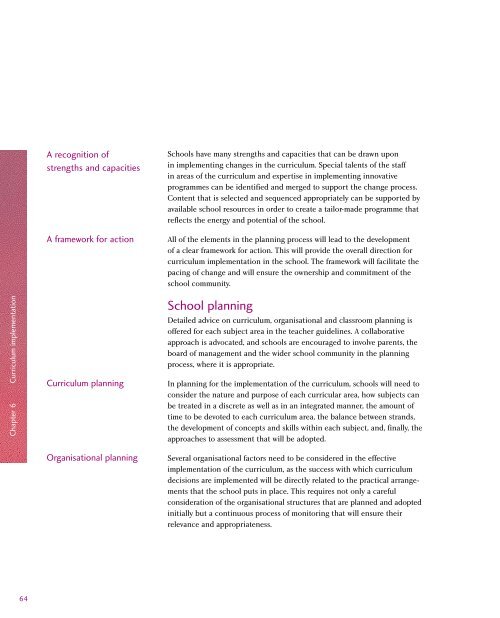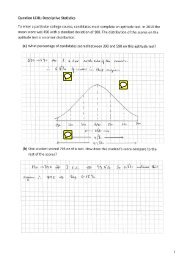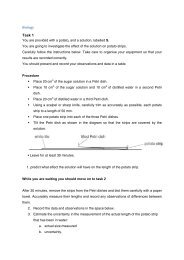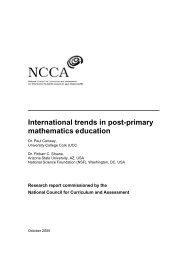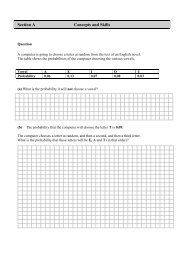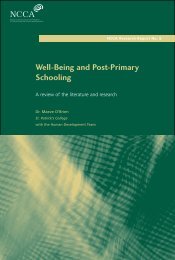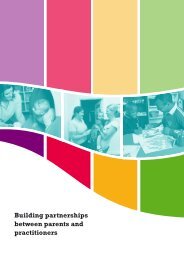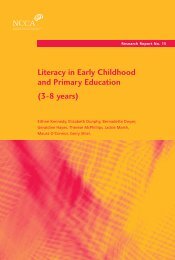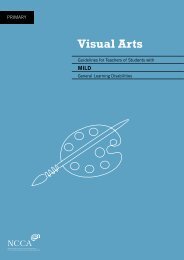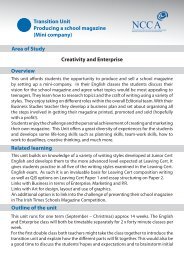Primary School Curriculum Curaclam na Bunscoile - NCCA
Primary School Curriculum Curaclam na Bunscoile - NCCA
Primary School Curriculum Curaclam na Bunscoile - NCCA
Create successful ePaper yourself
Turn your PDF publications into a flip-book with our unique Google optimized e-Paper software.
Chapter 6 <strong>Curriculum</strong> implementation<br />
64<br />
A recognition of<br />
strengths and capacities<br />
A framework for action<br />
<strong>Curriculum</strong> planning<br />
Organisatio<strong>na</strong>l planning<br />
<strong>School</strong>s have many strengths and capacities that can be drawn upon<br />
in implementing changes in the curriculum. Special talents of the staff<br />
in areas of the curriculum and expertise in implementing innovative<br />
programmes can be identified and merged to support the change process.<br />
Content that is selected and sequenced appropriately can be supported by<br />
available school resources in order to create a tailor-made programme that<br />
reflects the energy and potential of the school.<br />
All of the elements in the planning process will lead to the development<br />
of a clear framework for action. This will provide the overall direction for<br />
curriculum implementation in the school. The framework will facilitate the<br />
pacing of change and will ensure the ownership and commitment of the<br />
school community.<br />
<strong>School</strong> planning<br />
Detailed advice on curriculum, organisatio<strong>na</strong>l and classroom planning is<br />
offered for each subject area in the teacher guidelines. A collaborative<br />
approach is advocated, and schools are encouraged to involve parents, the<br />
board of ma<strong>na</strong>gement and the wider school community in the planning<br />
process, where it is appropriate.<br />
In planning for the implementation of the curriculum, schools will need to<br />
consider the <strong>na</strong>ture and purpose of each curricular area, how subjects can<br />
be treated in a discrete as well as in an integrated manner, the amount of<br />
time to be devoted to each curriculum area, the balance between strands,<br />
the development of concepts and skills within each subject, and, fi<strong>na</strong>lly, the<br />
approaches to assessment that will be adopted.<br />
Several organisatio<strong>na</strong>l factors need to be considered in the effective<br />
implementation of the curriculum, as the success with which curriculum<br />
decisions are implemented will be directly related to the practical arrangements<br />
that the school puts in place. This requires not only a careful<br />
consideration of the organisatio<strong>na</strong>l structures that are planned and adopted<br />
initially but a continuous process of monitoring that will ensure their<br />
relevance and appropriateness.


